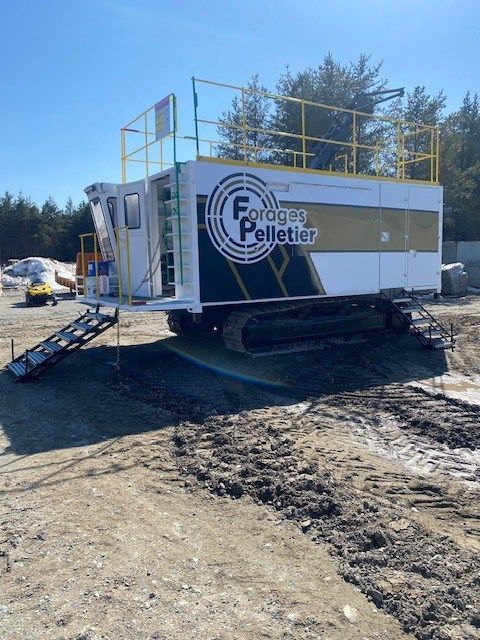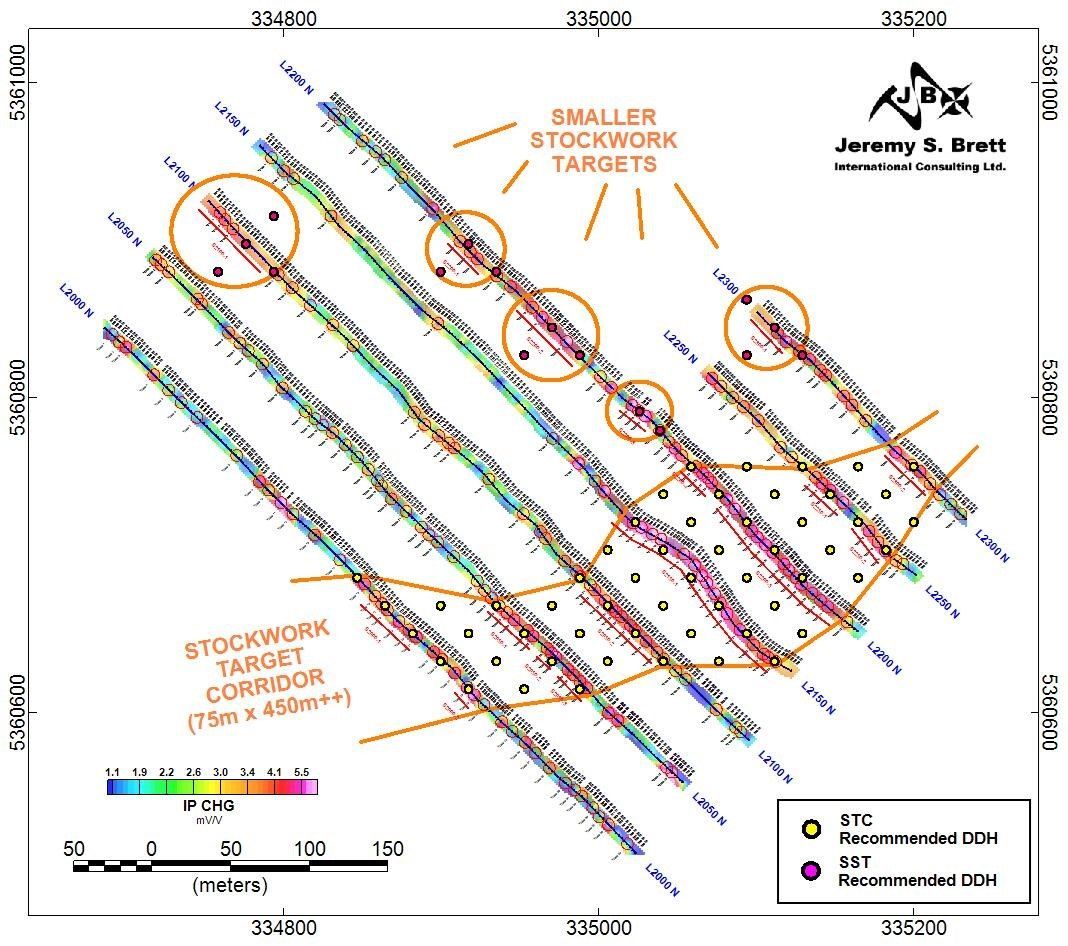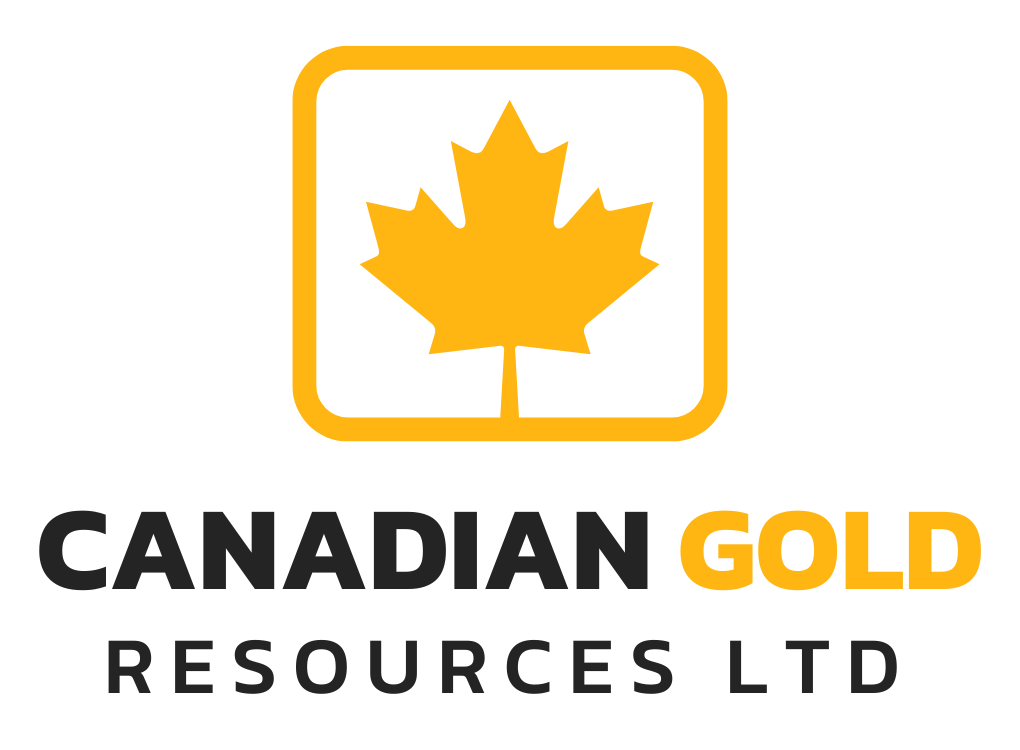NEWS RELEASE
Canadian Gold Resources Secures Permits for Exploration Bulk Sample at Lac Arsenault
Dieppe, N.B. – July 15, 2025 – Canadian Gold Resources Ltd. (TSXV: CAN) (“Canadian Gold” or the “Company”) is pleased to announce that it has received all required permits from the Government of Québec to proceed with a bulk sampling program with plans to test 5,000 tonnes of mineralized materials at its 100%-owned Lac Arsenault Gold Project, located in the Gaspé region of eastern Québec. The bulk sample is intended for exploration purposes only and is not considered a production decision.
As a condition of the permit, the Company is required to drill three (3) shallow water monitoring wells in the vicinity of the proposed sampling area to identify potential groundwater presence. If water tables are encountered, baseline water quality testing will be conducted both before and after the program. Canadian Gold fully supports this requirement as part of its commitment to responsible exploration and environmental stewardship.
Next Steps
With permits secured, Canadian Gold will now begin preparations for mobilizing personnel and equipment to site. In the coming weeks, the Company will finalize agreements with drilling, excavation, and haulage contractors, complete the required water wells, and install temporary infrastructure to support safe operations near the Baker and Mersereau veins. Once site preparation is complete, material sampling is anticipated to commence and continue for approximately three weeks. The sampled material will be transported to a third-party facility for off-site processing and analysis. Updates will be provided as results become available, including recoveries and implications for future exploration planning.
Management Commentary
Ron Goguen, President & CEO of Canadian Gold, commented:
“Receiving this permit is a major milestone in the advancement of our Lac Arsenault Project. This program is designed to evaluate the technical and geological characteristics of the near-surface mineralization. Historical work conducted by Imperial and Esso Minerals in the 1970s reported a historical estimate of approximately 40,000 tonnes grading 15.43 g/t gold and 197 g/t silver (Stevenson, L., 1975, Geological Report on the Lac Arsenault Property, Esso Minerals Canada). A subsequent 1996 report revised the estimate to 199,580 tonnes grading 9.59 g/t gold, or approximately 61,536 contained ounces (Côté, R., 1996, Lac Arsenault Project Resource Evaluation, Unpublished Internal Report). While these historical estimates do not comply with current CIM standards, they indicate strong historical interest in this high-grade system. Additional core drilling, systematic surface sampling, and database verification will be required to validate the data and assess whether a current resource can be defined.”
Clarification on Economic Potential
While Canadian Gold is encouraged by the opportunity to generate technical and metallurgical data from the bulk sample, no economic analysis has been completed, and there are no mineral reserves at Lac Arsenault. Any references to possible revenue from sample processing are entirely speculative and do not demonstrate economic viability. There is no production decision and no feasibility study has been conducted. Should positive results occur, proceeds may be allocated toward working capital, additional exploration, or future shareholder returns, but no production decision or dividend policy has been made at this time. There is no assurance that results will support future exploration or development decisions.
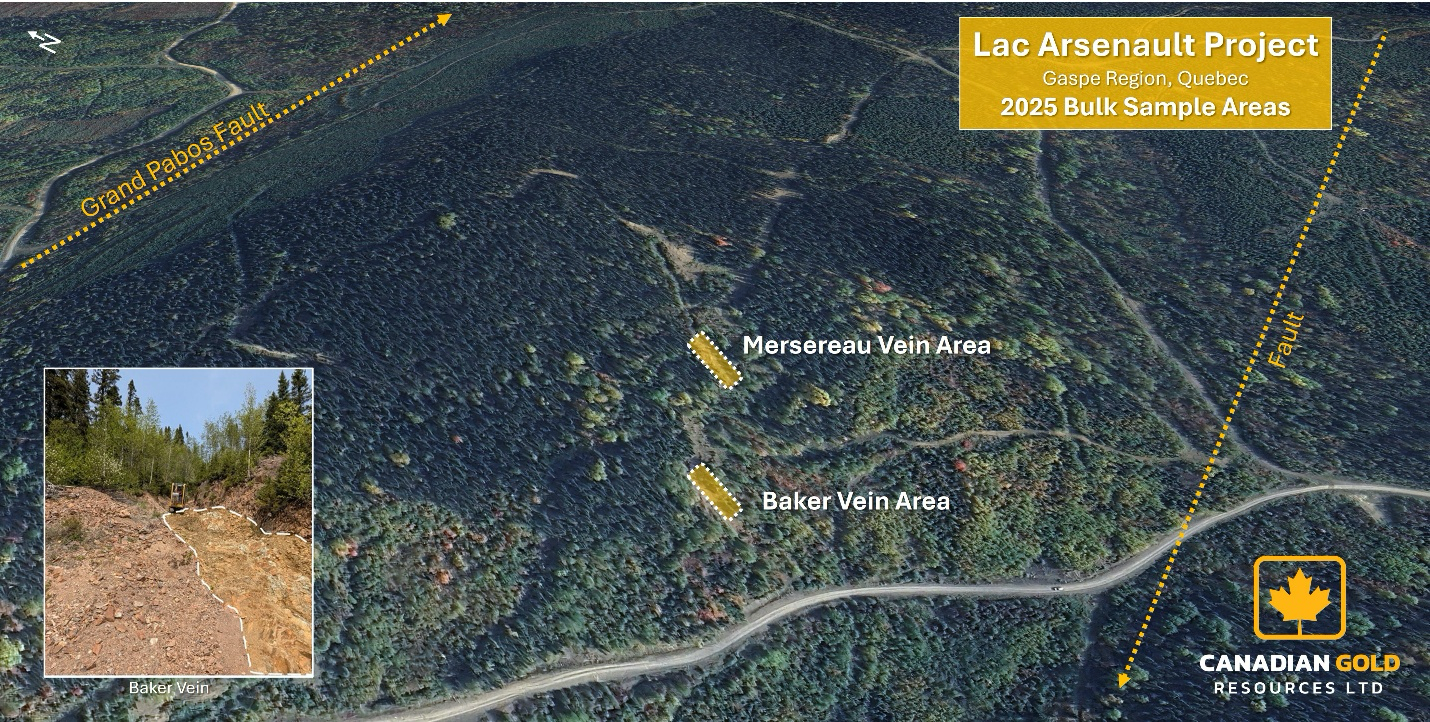
Historical Resource Estimate Disclosure (NI 43-101 2.4)
The Company refers to the following historical estimates:
- Stevenson, L. (1975) – Geological Report on the Lac Arsenault Property, Esso Minerals Canada: 40,000 tonnes @ 15.43 g/t Au and 197 g/t Ag
- Côté, R. (1996) – Lac Arsenault Project Resource Evaluation, Unpublished Internal Report: 199,580 tonnes @ 9.59 g/t Au (approx. 61,536 contained oz Au)
These historical estimates were based on underground sampling and trenching using manual polygonal methods. The estimates are relevant as they reflect historical interpretations, but they pre-date NI 43-101 and do not comply with current CIM Definition Standards. A Qualified Person has not completed sufficient work to classify the estimates as current mineral resources or mineral reserves. The Company is not treating the estimates as current, and further verification is required.
To bring these historical estimates into compliance with current CIM standards, the Company anticipates conducting:
- Systematic diamond drilling to confirm historical grade and geometry of the mineralized zones;
- Verification sampling of archived and in-situ material, if available;
- Construction of a validated digital geological model based on modern logging and QA/QC procedures;
- Density determinations and geostatistical analysis in accordance with current best practices;
- Independent resource estimation by a Qualified Person using current CIM categories and estimation methods.
The Company believes the planned exploration bulk sample will provide critical geological, grade continuity, and metallurgical information to support this process.
About the Lac Arsenault Project
The Lac Arsenault Project is located in Québec’s Gaspé region and hosts multiple high-grade epithermal-style vein systems including the Baker, Mersereau, and Dunning veins. The project lies along the Grand Pabos Fault, a regional structure within the Gaspé–Newfoundland tectonic belt that shares characteristics with other productive gold systems, such as the Cadillac–Larder Lake Fault Zone (Abitibi) and the Cape Ray–Valentine Lake Shear Zone (Newfoundland), which are known to host multi-million-ounce deposits.
Surface Sample Highlights
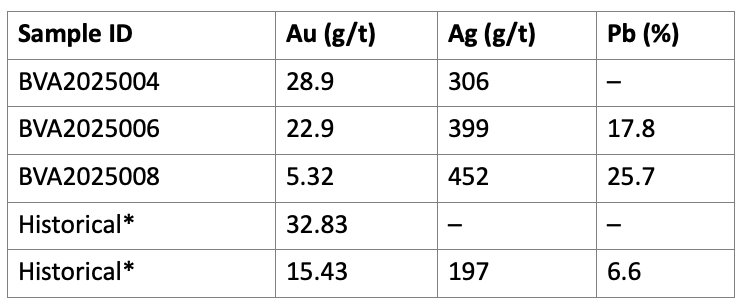
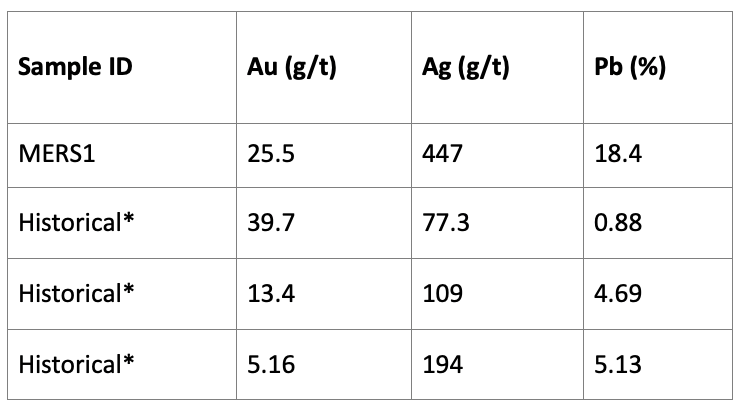
* Historical results are cited from Stevenson (1975). These assays are not compliant with NI 43-101 and are provided for reference only. Surface samples are selective in nature and may not reflect the average grade or continuity of mineralization.
Note: The 2025 surface sample results shown above were previously disclosed in the Company’s news release dated July 9, 2025, which included complete QA/QC protocols and analytical methods in accordance with NI 43-101.
The purpose of the permitted bulk sample is to evaluate grade continuity, test metallurgical recoveries, and gather data to inform future exploration and development decisions. The Company cautions that this bulk sampling initiative is not based on a feasibility study of mineral reserves demonstrating economic or technical viability. As such, the technical and economic outcomes are uncertain, and there is a higher risk of failure. The bulk sample program is exploratory in nature.
About Canadian Gold Resources Ltd.
Canadian Gold Resources Ltd. is a Canadian junior exploration company advancing a portfolio of precious metals projects in Québec. The Company’s flagship asset is the Lac Arsenault Project, where a fully permitted bulk sampling program of up to 10,000 tonnes is now ready to get underway. Canadian Gold also holds interests in other highly prospective properties in the Gaspé Peninsula and remains committed to discovery-driven growth.
Qualified Person Statement:
The scientific and technical information in this news release has been reviewed and approved by Mark Smethurst, P.Geo., a Director of Canadian Gold and a Qualified Person as defined under NI 43-101.
For further information, please contact:
Ronald J. Goguen
President & CEO, Director
Canadian Gold Resources Ltd.
📧
rongoguen@cdngold.com
📞 +1 (506) 857-4090
Investor Relations
📧
investors@cdngold.com
Neither the TSX Venture Exchange nor its Regulation Services Provider (as that term is defined in the policies of the TSX Venture Exchange) has reviewed or accepts responsibility for the adequacy or accuracy of this release.
Forward-Looking Statements
This news release contains forward-looking statements within the meaning of applicable securities laws. These include, but are not limited to, statements regarding exploration plans, the timing and execution of the bulk sample program, and the potential results or economic implications of the program. Forward-looking statements are based on numerous assumptions and subject to known and unknown risks. There is no assurance that the bulk sample will achieve its intended objectives or lead to a compliant resource estimate or economic development. Readers are cautioned not to place undue reliance on such statements. The Company disclaims any obligation to update or revise forward-looking statements except as required by law.
Share This
Recent News Releases
